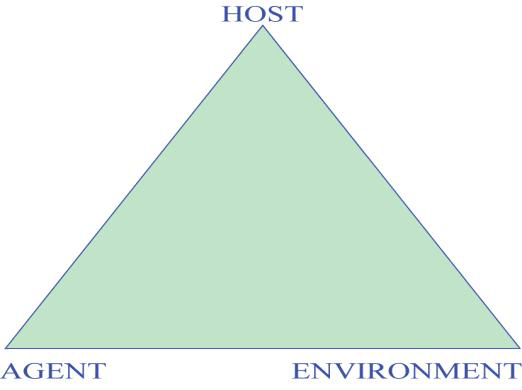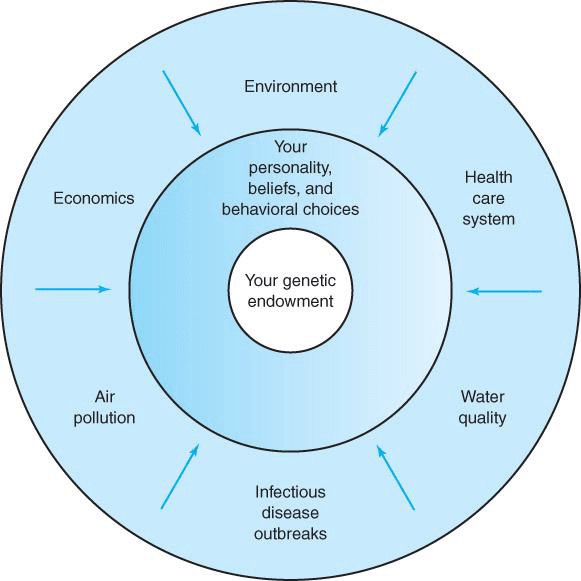
There are three models of disease causation. These are: chain of infection model, communicable disease model and multi-causation disease model for non-communicable diseases. But, no matter which model is applied to explain disease causation and spread, health education has a very important role in reducing the spread and transmission of diseases through helping people reducing their health risks.
A) Chain of Infection Model. This model explains the spread of a communicable disease from one host (or person) to another. The basic idea represented in the chain of infection is that individuals can break the chain (reduce the risk) at any point, thus the spread of the disease can be stopped (See Figure 9.1).

The portal of entry and exit both involve preventive measures such as hand washing, condoms, hair nets and insect repellents, while the human reservoir and transmission measures both involve isolation. With the application of such information, health education can help to create programs that are aimed at breaking the chain and reducing the risks of infection in other people. As a health extension worker, you will be able to educate individuals and your community about these interventions and help to implement many of them.
B) Communicable Disease Model. This model includes the three minimal requirements for the presence and spread of a communicable disease in a population (See Figure 9.2).

Let Us Look at Them One by One:
The Health Extension practitioner need to design and give health education to avoid or reduce the susceptibility of the host, and to reduce some favorable environmental conditions which may be good for the development and spread of the agents. For example, health education should be given on good dietary practices to develop the host immunity and to reduce susceptibility.
C. Multi-causation disease model. This model explains the onset of disease caused by more than one factor. Both the chain of infection and communicable disease models are helpful in trying to prevent disease caused by an infectious agent.
However, these models are not applicable to non-communicable diseases, which include many of the chronic diseases such as heart disease and cancers. Therefore, the possible causes for such and other chronic non-communicable diseases include a combination of factors such as infectious agents, environment, genetic factors, personal behaviors, economics...etc (See Figure 9.3)
